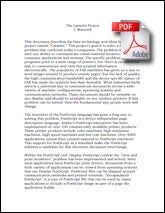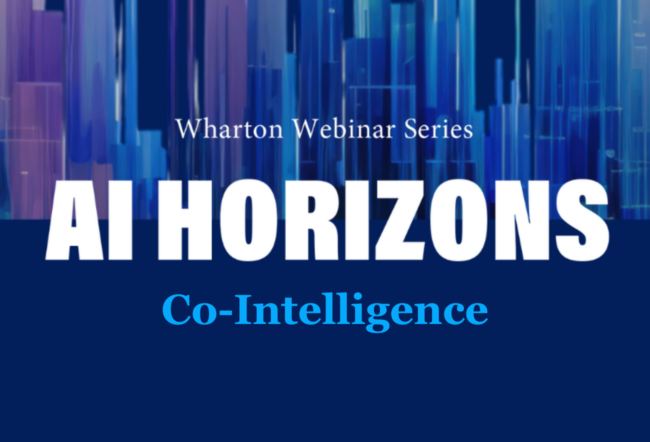Twenty years ago, on June 15, 1993, Adobe Systems officially introduced the Acrobat product suite and its underlying file format, the Portable Document Format (PDF).
It’s difficult now to recall how challenging it was to exchange electronic documents before then. Plain text files worked, but failed to capture the typography, graphics and design of printed documents. Sending someone a file from a specific software program — such as a Microsoft Word .doc file — required both parties to own the program and often, to make things work correctly, the same version of the program. Even then, the fonts could change, the text might reflow and the document would repaginate.
What was needed was a universal electronic document format. That sounds straightforward enough, but the problem was deceptively complex. The format would need to be able to represent any conceivable type of document content with various fonts, graphics, images and complex page layouts. It would need to be easily viewed on any computer platform: DOS, Windows, Macintosh, UNIX and, later, mobile devices from Palm, Compaq, Apple and others. And, perhaps most challenging, it would need to be easily created by a wide range of authoring tools — word processors, page layout programs, spreadsheets and architectural design software, to name a few.
It was a tall order. But Adobe Systems had a secret weapon: The PostScript printer language that, since its introduction in 1985, had become a widely-supported standard for printing documents. Adobe Systems co-founder and then CEO John Warnock began to experiment with how he could both simplify and extend PostScript to become a universal document format.
Beyond the technical problems were the marketing challenges. Acrobat didn’t catch on at first; as Warnock tells Knowledge at Wharton, “Nobody got it” — and the product lost money for the company for years. Warnock persisted, and eventually Acrobat became the firm’s most successful product.
Knowledge at Wharton recently sat down with two of the driving forces behind Acrobat throughout the product’s 20-year history: Warnock, Adobe Systems co-founder and co-chairman, and Bob Wulff, now Adobe senior vice president of technology, who managed Acrobat’s engineering teams for most of the product’s 20-year history.
Warnock and Wulff discuss how PDF grew out of Adobe’s earlier PostScript printer language and why Adobe continued to devote resources to the product even though it remained unprofitable for years. Warnock also explains why he thinks Tim Berners-Lee made a “fundamental error” in the design of the worldwide web and why he believes Apple’s App Store is based on a “sinful” business model.
An edited version of the conversation follows.
Knowledge at Wharton: What was the original germ of the idea that became Acrobat and PDF?
John Warnock: In 1984, we were getting ready for the announcement of the [Apple] LaserWriter at MacWorld in January 1985. I had hand-coded a tax form in PostScript [the LaserWriter’s programming language], and I put in a lot of subroutines [sets of programming instructions] to take care of the little dashed lines and zillions of little fields and things like that. When we sent a file to the LaserWriter, it took two minutes and 30 seconds to print. Steve [Jobs] loved the tax form and wanted to use it on stage, but he said, “John, I can talk — but I can’t talk for two minutes and 30 seconds waiting for something to print.”
So I wrote a little program called Graph Bind that caught [each] graphics operator and wrote it out [with] its parameters. All of the [program] loops were unwound, and the only thing left were the imaging operators — the bare-bones [instructions] needed to print. The file was now much larger, but it executed in 14 seconds as opposed to two and a half minutes.
Knowledge at Wharton: How did optimizing PostScript like this lead to PDF and Acrobat?
Warnock: Since the old days in the 1960s when I worked with computers, people were trying to figure out how to send documents from one point to another. One of our big OEMs [original equipment manufacturers], Digital Equipment Corporation, said, “We want a universal document format.” They had a thing called the Compound Document [Architecture]. Essentially it [took] every good idea in the document and added it into a static data structure. It was very much like HTML and XML. Like HTML today, people just piled stuff onto it, and it got more and more complicated and arcane.
A lot of people were shipping around PostScript files, but PostScript files have some really nasty properties. You can’t determine how long they’re going to execute or how many pages they’re going to produce. And you can’t easily ship around font files with them.
It occurred to me we could use the Graph Bind operator to get all the computational stuff and conditionals out of [the file] and just have the imaging operators. It would be a flat file with a very nice structure, and all the pages would be independent from one another. This trick got rid of the major obstacle.
Bob Wulff: The really nice thing about Acrobat is that we were able to create PDF files from any application because every application prints. Once you give us a print stream, we can do the rest. So we didn’t have to go to the application manufacturer and say, “Would you modify your application to generate [our file format]?” We didn’t have to get permission from them.

Warnock: It was a cool idea since, after 10 years, everybody on the planet had PostScript generators from every known application. You had a ready-made way to get people to adopt it, because they already had the PostScript files coming out of the applications.
In 1991, I wrote the Camelot paper, which essentially describes the Graph Bind process and how it flattens a file. And With Bob’s help, we got together a very small team.
Wulff: The way I would look at it is: You had PostScript, so we had the imaging model. You had Illustrator, which showed how, at least for a single page, you could do something as expressive as PostScript, but you took out the [programming] language and just had a declarative set of marking operators. Then you had Interchange PostScript which, if you read it, sounds a lot like PDF.
Warnock: The other thing that was critical to the development of Acrobat was ATM [Adobe Type Manager] for the font rendering.
Knowledge at Wharton: Bob, How did you get involved with Acrobat?
Wulff: The very first prototype was done in June of 1990. John [Warnock] began to show that to people. He had a big meeting with IBM in August 1990. To show it to IBM, he needed [the demo] on Windows; all the prototypes had been done on a Mac.
I was the token Windows programmer — Adobe was mostly a Mac company at that point. [Since John had] found a Windows programmer, he asked me to do the demo. Luckily I said yes, because that was my very first stab at the Acrobat project. I spent, I think, two or three days around the clock getting the demo ready, and John showed it to IBM.
Knowledge at Wharton: Did you ever hear how the demo for IBM went?
Wulff: I don’t remember. I just know that [Adobe] kept saying “Hey, let’s get some more people on this,” and it began to gather steam.
Warnock: We essentially hacked together something [to show] “This is what it would look like.” But you couldn’t turn that into the product. What you needed were really, really heavyweight industrial systems designers to do the file format, because otherwise you would get scaffolding that wouldn’t hold anything. We envisioned that eventually video and all this stuff would become part of [PDF], so we needed an infrastructure that would do that.
Knowledge at Wharton: It seems there was a strong emphasis on PDF, Acrobat’s underlying file format.
Warnock: The file format was the focus because you knew that the thing had to have legs if it was going to be successful. You wanted something that was structurally extensive and very sound. We had no idea of the security issues at those times, but the security issues with an embedded system like PostScript would have been worse.
Knowledge at Wharton: Yet, despite the problems PDF and Acrobat solved, didn’t you have a difficult time getting people to understand what the product could do?
Warnock: We announced Acrobat and did road tours — and nobody got it. We went to Gartner, and [someone there] said, “This is no good because it’s not editable. Why don’t people just send around Lotus files? This is worthless; it’s going nowhere.”
I went to Poughkeepsie [N.Y.] and met with IBM. I explained how it worked, what its advantages were and how, from any application, you could send a completely portable document across platforms. They just sat there in the meeting with blank stares. They had no idea what I was talking about.
Knowledge at Wharton: What were you thinking at that point?
Warnock: I was thinking how stupid can the world be?
Wulff: I was thinking if the revenue doesn’t start to go up, I’m going to lose my job [laughs].
Knowledge at Wharton: Yet, you had a few high-profile customers early on.
Warnock: There were early adopters who obviously got it. The Centers for Disease Control was one of our earliest and most fanatical adopters. They said, “Do you know how many people’s lives we can save by sending these documents out to all of the field offices?” And The New York Times picked it up for their on board ship version, the Times Fax. The IRS loved it.
And in 1994, the worldwide web hit, and then everybody said, “Oh, well, you can use Acrobat to send documents.” What a concept!
Wulff: You certainly couldn’t use HTML.
Warnock: No, you certainly couldn’t.
Knowledge at Wharton: With Acrobat 1.0, the Reader wasn’t free — you charged $35 to $50 per seat. With Acrobat 2.0 in fall 1994, the Reader became free.
Warnock: The board questioned [the decision]: “You’re going to give the Reader away?” I think it was one of the first instances of giving software away.
Knowledge at Wharton: John, didn’t you initially have doubts about making the Reader free?
Warnock: Well, I was a little bit of a skeptic.
Knowledge at Wharton: What finally convinced you that Acrobat Reader should be free?
Warnock: We had to get people out there using it in order to understand it. One of our head sales guys, Clint Nagy, always said, “What is this good for? Why do people want this?” That response just baffled me.
Wulff: The current product was not flying off the shelves like we thought it would. The Mosaic browser was free. Our [electronic document] competitors — Envoy, Common Ground and Replica — all had free readers. Our competition was doing this. The web browsers were doing this. There was a change happening in the industry.
By the time we made the decision — even though it was emotional and controversial to get to that point — once it was made, it was the obvious thing to do. We had to do it.
Knowledge at Wharton: Didn’t Acrobat lose money for Adobe for many years?
Warnock: Yes, for about four years.
We had meetings where [the managers of] other applications, like Photoshop, [would say], “Why in the hell are we spending a dime on Acrobat when we make all the money and are resource poor?” But that’s the story of software development everywhere — the people who have the money want more. I said, “I absolutely believe that this is a salvation for mankind and we really need to stick to it.”
Knowledge at Wharton: If Acrobat wasn’t profitable for all those years, why did you continue to invest in the technology?
Warnock: It was one of the major problems in computing that had been around for decades, and we had solved it. I felt if the rest of the world is too stupid, I don’t care. I’m going to do this.
It was the same when I made the decision to license Photoshop. When it was first demoed to me, Photoshop ran on the 512K Mac and had a maximum size hard drive of 20 megabytes. There were no scanners — there was a little thing on the [Apple] ImageWriter called the ThunderScan. When we licensed [Photoshop] from the Knoll brothers [the program’s original authors], I said, “Maybe if we’re really lucky, we could sell 200 of these a year.” You had to take a gigantic leap of faith into the future.
Wulff: John, you were defending us with the board, but from the engineering side, Acrobat had huge energy and support in 1993 — and that lasted for a couple of years.
The time that I felt it going away a little bit would have been around 1996 or so when [Acrobat] had been out a couple of years and really hadn’t taken off. But we were still getting huge amounts of positive feedback from customers. While the dollars weren’t coming in, we were hearing from many, many people how great it was, how important it was and how they were doing experiments with it. So it wasn’t like we shipped it and didn’t hear anything. There was still a lot of excitement about it for a couple of years; it just took a while for the revenue to catch up.
[In addition to] the Internet and the worldwide web, there was e-mail. If you go back to 1993, very few non-technical people used e-mail, but by 1996, everyone was sending e-mails around with file attachments, and that’s when you experienced the problem of — without using PDF — it just didn’t work.
Warnock: If you sent a [Microsoft Word] .doc [file] around, just no chance.
Knowledge at Wharton: Although the web provided a ubiquitous distribution platform for PDF files, didn’t it also provide competition for Acrobat and PDF? Many people began to publish documents in HTML.
Warnock: Yes, but HTML at that time was a joke for anyone who had ever been near the publishing business. You didn’t have fonts; you didn’t have control. You still don’t have control. For people who care about forms, contracts, user manuals and things like that, you could hack it together in an HTML file, but it didn’t look good. They’ve spent 20 years trying to fix that, and they’re not there yet.
When Tim Berners-Lee invented the [worldwide web], he made a fundamental error in the design. HTML was not device independent. You cannot draw a one inch square in HTML. Period. End of discussion. It never will work in a million years. That’s because the fundamental imaging model is not device independent.
We learned in 1982 [with PostScript] how to make things device independent. If you want something to be 10 point type, it’s 10 point type. If you want to draw a one inch square, you can draw a one inch square. That is essential, even though [people] say, “Oh no, you don’t need device independence because you’re going to the screen.” You need it more than ever, because the resolution in my Android is different than the resolution of the iPad. There are 15 different screens with different resolutions that are physically the same size. It’s a nightmare.
Knowledge at Wharton: But HTML is device independent, isn’t it? It’s just not device independent at the level of document rendering. The document’s content and structure are preserved across platforms, even if it looks a little different on each of them.
Warnock: Yes, it’s computer architecture independent, but there are physical representations of the page which are not device independent.
People started hacking [HTML] in 1994, and they are still hacking. Now, a pixel is being defined by the W3C [World Wide Web Consortium] group as a 96th of an inch — sort of. But they even got that wrong — because they round everything to the nearest pixel. In PostScript, we never do that.
They made a fundamental error in the design of HTML and they can fix it. Like PostScript, they can say a point is a 72nd of an inch and [you can] make a pixel that’s a 96th of an inch, but it has to be a mathematical 96th of an inch. Period. Then you can standardize on it, and everything will work. Then, if I want to design for a three-inch screen, I can design for a three-inch screen.
I build websites as a hobby. I have two bookshelves that have nothing but books about programming for the web — PHP, CSS, HTML, XHTML, Perl, JavaScript — it goes on and on and on. It literally fills two full bookshelves of stuff you have to know if you want to claim to understand the web. That’s just too complicated, and it’s getting worse. Hack is being put on top of hack — a lot of it is getting around this device problem. The device problem is a serious, serious problem. I wish we could figure out the way to fix the web.
Knowledge at Wharton: Yet with abundant JavaScript libraries and other tools — isn’t web development getting easier?
Warnock: You cannot read close to 90% of the commercial sites on the web on your phone. So what do corporations do? They write a stupid app to build an interface between the phone and the Internet. That’s absurd. You should be able to build a perfectly usable app on the Internet and not have to go through the stupid App Store or the [Google] Play store or whatever the hell it’s called.
Knowledge at Wharton: What’s wrong with the App Store?
Warnock: It’s just a stupid model. And it’s a model trying to trap revenue for Apple. It’s essentially a sinful model, in my view. It’s not correct. The world needs to defeat the App Store. It really does.
Steve [Jobs] and I used to always have the conversation. I’d say, “Steve, I’m always going to build applications for all platforms. I don’t believe in proprietary platforms. I don’t think computers are useful in that domain. So kill me.”
Knowledge at Wharton: Isn’t the tension between PDF and HTML one of presentation versus structure — with Acrobat prioritizing presentation? The original press release for Acrobat 1.0, on June 15, 1993, announced “Support for structured documents including SGML in the first half of 1994” — that didn’t happen.
Wulff: It’s always a mistake to put future product features in a press release [laughs].
Warnock: The SGML crowd has always said that you need to preserve the content of the document and then we’ll figure out the presentation. And yes, you can extend it to do any particular task, whether you would want to or not. I would fall on the [side of the] straightforward approach, rather than make this hacky language.
Wulff: Although, maybe in hindsight, it was a blessing [HTML] didn’t go towards PDF. It could have encroached on our business, but it didn’t. It chose to go the other way. Our mission was pretty simple: Preserve the presentation of the document.
Knowledge at Wharton: Despite the challenges, Acrobat became a successful product for Adobe.
Warnock: It is Adobe’s largest product.
Knowledge at Wharton: More than Photoshop?
Warnock: Yes.
Wulff: We talk about, “Why was PDF successful? Why was Acrobat successful?” The fact that we published the file format on June 15, 1993, in the public, with no patent encumbrances, was a huge, huge deal. Looking back at the Type 1 format or Flash — things that didn’t get published until later in their life — maybe we would have done those differently. With PDF, on day one, people could read and write [the format] with their own code; they didn’t have to buy a line of software from Adobe.
Knowledge at Wharton: You publish standards that are open — that is, publicly documented — but they are still controlled by Adobe, rather than by the committee standards.
Wulff: That’s how we play it. [PDF] is open, but we obviously controlled it until 2008 when it became the ISO 32000 standard.
Knowledge at Wharton: Are there opportunities that Acrobat missed? Amazon’s online “Search Inside the Book” feature, for example, doesn’t use PDF. The popular eBook formats are not PDF.
Warnock: First of all, Amazon does a crappy job of re-laying-out books. I have a book on HTML and they say, “The ampersand should be coded…” and it shows a picture of an ampersand. It’s picking up the HTML code and turning it into an ampersand, not realizing that the code is supposed to be a literal code. And if you read Kindle [documents] on your phone….
If Adobe were to solve that problem, I don’t think we would like to hack through it. We would like to do it in a way that was robust and naturally handles all of the ugly cases.
So, yes, [document] reflow is great. We do need reflow and eventually, we’ll figure out a way to reliably do it. But, for now, if you want to send a book to be printed, it goes out as a PDF file.
Wulff: There’s a little known story about DPS [Adobe’s Digital Publishing Suite for developing document-centric apps for the iPad and other tablets] which started out [using] PNGs [image files], and now they’ve turned to PDFs because it needed to be scalable, and needed [to work on] different resolution displays.
Knowledge at Wharton: This is a theme we’ve heard from you before, John. [See Knowledge at Wharton, “Adobe Co-founder John Warnock on the Competitive Advantages of Aesthetics and the ‘Right’ Technology.”] You don’t seem to be interested in partial solutions.
Warnock: No.
Knowledge at Wharton: Is this a good thing or a bad thing?
Warnock: Steve Jobs was like that. Steve Jobs didn’t like to do hacky work. And, you know, when you start compromising on that kind of stuff, your reputation is only eroded a little — every time you do it.
[PDF] is a very robust format. I think it’s easier to reproduce multiple PDFs for the various devices than deal with what Amazon deals with today, because that’s error prone. It just makes bad mistakes.
Knowledge at Wharton: Over the years, you’ve added more and more features to Acrobat. Has it been difficult to communicate all of the features that Acrobat can do?
Warnock: There are a whole bunch of features in there that are not appreciated enough.
The OCR has gotten really good. You can scan in a document now [from which] you can actually select and [then] cut and paste the text. I don’t know of anybody who really does that, but they are features that are very useful if you’re in the content building business.
I did a web capture of the NASA site when they landed on Mars, and [Acrobat] did it flawlessly. I had the whole 600-megabyte PDF file that represented the entire NASA website on the Mars landing. The data no longer exists anywhere except in that PDF file. That PDF will execute in another 10 or 15 years, hopefully, but websites are ephemeral; they come and they go. You need to have tools like this to capture a state, place and time.
Knowledge at Wharton: You mean archival applications?
Warnock: Yes. The National Archives used to have text as their format.
Wulff: [Sarcastically] Want to see the Constitution in text? Please.
Warnock: Finally, the standards group got a substandard of Acrobat [PDF] that they felt that they could support in the National Archives. It’s an archival format. It’s enormously important to be able to capture stuff so that it will last.
Knowledge at Wharton: It seems like there has been a marketing challenge with Acrobat. Has Acrobat’s technology been stronger than its marketing over the past 20 years?
Warnock: Always.
Wulff: It’s a really broad product. There are lots of things one might do with documents, and we keep thinking of more things. You end up building features that are important to a small part of your audience.
[For example], we build features for lawyers — so they know a lot about them, but other markets don’t know about them. Then we build features for creative pros and publishers. They care about all the pre-press features, but lawyers don’t care about those.
It’s interesting how well Acrobat and PDF survived the trip to smart phones and tablets. I was amazed when the first iPhone came out; you could actually read PDFs because you could stretch them. On tablets, it’s incredible. For me, it’s the best way to read information; trying to read other formats is very difficult for me on tablets. That’s something that we didn’t think about back in 1993, and then 15, 18 years later, they come out.
Knowledge at Wharton: We’ve discussed your views on the limitations of HTML. If you had a time machine and could do it over again, is there anything in the development of PDF or Acrobat you would change?
Wulff: If I had it to do again, I probably would have focused more on compression in the early days. I think it was Acrobat 6 where we finally took a hard look at the compression and found a way to compress everything. In the first release, we didn’t compress everything; we left some of the objects in the clear.
Warnock: Security. If you have the most popular file format in the world, guess where hackers go?
Knowledge at Wharton: How do you deal with the security issue as a company?
Warnock: You make the thing bulletproof.
Wulff: We put [Acrobat] in the sandbox, so even if a vulnerability is found, it cannot escape to the rest of your operating system or your files to do any damage. But it’s a constant battle.
Knowledge at Wharton: Despite all you can do with Acrobat, are there additional features you wish it had?
Warnock: I want galleys — a piece of text this wide and as long as it needs to be — the way HTML works. [PDF] needs that HTML feature.
I built a PDF file that was three and a half inches wide and 82 feet long or something. If you open that PDF file, you can read that document perfectly, with hyphenation. I built it in InDesign [Adobe’s page layout program] and gave it a big, long column. So, that is a feature I want in Acrobat. Galleys would be wonderful.
Knowledge at Wharton: Isn’t that an authoring tool problem rather than a PDF/Acrobat problem?
Warnock: Acrobat has a limitation on the size of the page. Right now, there’s not a convenient authoring technique to author galleys that have hyphenation and justification. And there isn’t an equivalent in PDF. They really need to change [Acrobat’s] Web Capture feature so that it runs in galley mode.
Knowledge at Wharton: Bob, after leading the engineering team on this product for so many years, do you have any advice for other engineering managers?
Wulff: You’re not going to get much sleep [laughs]. I was in the right place at the right time when the project started up, and I was lucky enough to be picked to lead the engineering. I had support all these years. What I’d say is: Anytime you’re given an opportunity, just run with it as hard and as fast as you can, because these opportunities don’t happen every day.
Knowledge at Wharton: John, any advice for other business leaders?
Warnock: Well, I’ve been in the computer business since 1963 — damn, that’s 50 years! — and there are certain problems that have been consistent through that business that were important to solve. I thought the way we solved [this one] was really ingenious.
The business [lesson of Acrobat is]: Build a product that absolutely everyone on the planet will use.
Knowledge at Wharton: Any final thoughts on the 20-year legacy of Acrobat and PDF?
Warnock: Every time I meet someone and say I’m associated with Adobe, they say, “Yes, I use your product every day.” They mean Acrobat.
Wulff: That’s the great thing about working on this product — everyone knows what it is. They might miscall it “Adobe” versus “Acrobat,” but they know what PDF is. People — whatever the job they’re in — tell me how important it is. It’s something that touches everybody.
And PDFs will last forever. Software and apps, readers and viewers, will come and go, but PDF files are really going to last forever.



